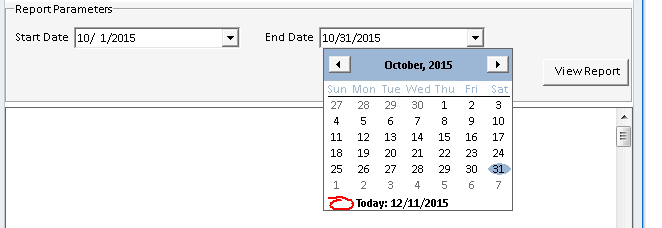Report parameters
Using report parameters lets you create dynamic report templates. There are two basic types of parameters:
Interactive report parameters (default):
You need to provide these parameters each time before the report is generated. An additional report parameter pane is shown at the top of the report preview area, where you can enter the required values. When you click View Report, the report is generated using the given parameters.

Figure Report parameters example Interactive parameters can be, for example:
Start date
End date
Year
Compound name
Peak area (to filter a peak results table)
Internal report parameters:
There is no input field for these parameters in the report preview. You set the parameter to a fixed value when you develop the template. The report is automatically generated using the given values.
Examples for internal parameters are:
Correction factors that you use in several expressions
Amount values that you use in conditional formatting
You can then use the value from a report parameter in almost any expression in the entire template. The only exception are filters for the graphical objects (chromatograms, calibration curves, spectra, charts), which do not expressions with report parameters yet.
Subpages
base-id: 11030150283
id: 11030150283